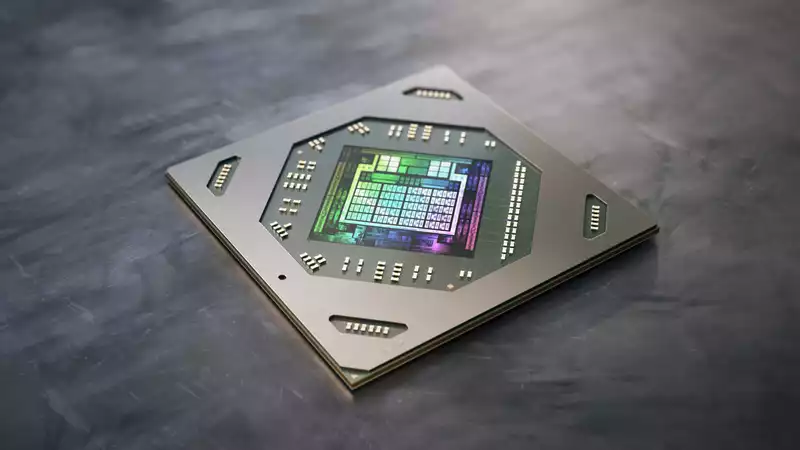AMD's latest GPU architecture, RDNA 2, has been well received on the desktop. And as expected, this is exactly what AMD has announced. The Red Team has announced three new GPUs for the laptop market: the Radeon RX 6800M, RX 6700M, and RX 6600M. Could we finally see some competition in the laptop graphics arena?
According to AMD, gaming laptops grew by a whopping 27% last year over the previous year. This is remarkable. The majority of these gaming laptops use Nvidia silicon to provide the muscle needed to handle the latest games; AMD does not want this to be repeated this year, and the RDNA 2 graphics architecture means that change means that there is plenty of potential for change.
Compared to the first generation RDNA, this latest spin offers 1.5x performance and up to 43% less power consumption. It also delivers 1.77 times better performance when the laptop is not connected to the socket. A promising start, to be sure.
Topping the new mobile lineup is the AMD Radeon RX 6800M (Navi 22) with 40 compute units, a ray accelerator, 2,300 MHz gaming clock, 12 GB GDDR6, and 96 MB Infinity Cache
It also has a 2,300MHz gaming clock.
These new graphics chips also support Smart Access Memory (AMD's impressive take on Resizable BAR) and AMD SmartShift, which shifts focus from the CPU to the GPU (or vice versa) as needed CPU to GPU (or vice versa) as needed. Basically, laptops with AMD CPUs and GPUs can expect an overall performance boost, and an improvement of about 10% is no small feat.
The big question for any GPU is how it will perform in games. At least according to AMD's own numbers, quite well. Of course, verification is needed, but as long as they are close to the numbers AMD has presented, AMD's new GPUs paint a good picture.
AMD showed another slide at the pre-briefing comparing the 12GB RX 6800M to the 8GB RTX 3070 and 8GB RTX 3080, Assassin's Creed Valhalla, Borderlands 3, CoD: Black Ops Cold War, Dirt 5, and Resident Evil Village, among others. It is worth noting, however, that with the exception of Call of Duty, these are all games developed in conjunction with AMD and optimized to some degree for AMD hardware. However, this should not compromise the adequate performance offered.
The Radeon RX 6700M (Navi 22) is one rank down from the top-of-the-line chips in the lineup, with 36 CUs, 10GB of GDDR6, and an 80MB Infinity Cache, but the same 2,300MHz gaming clock. Still, it is designed for 1440p gaming, and AMD is aiming for 100 fps in popular games. It should be a less expensive GPU for laptop makers.
Finally, there is the AMD Radeon RX 6600M (Navi 23) focused on 1080p gaming, with 28 CU, 2,177 MHz gaming clock, 8 GB GDDR6, and 32 MB Inifinity cache.
Again, AMD is targeting 100 fps on a variety of titles - the more strict triple-A titles will be below, but some of the faster esports titles will exceed 200 fps. However, 1080p is a perfectly fine resolution for gaming on the go, and it will be interesting to see how this compares to the GeForce RTX 3060. [AMD also designed a manufacturer-oriented design aimed at boosting performance, helping to pair hardware with the right display, making sure everything works well with AMD Radeon software, and ensuring that the end user gets a superior gaming experience in basically every aspect. A framework has also been introduced.
A major challenge for AMD will be convincing laptop manufacturers to use AMD's graphics silicon instead of Nvidia's, although Asus, HP, MSI, and Lenovo have The Asus ROG Strix G15 is a flagship machine with a Ryzen 9 5900HX and Radeon RX 6800M.


Comments